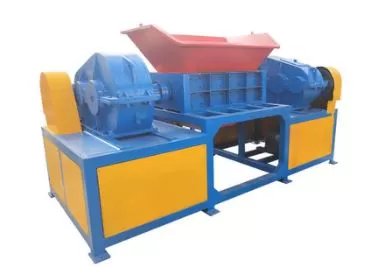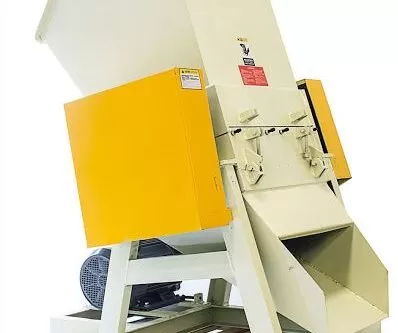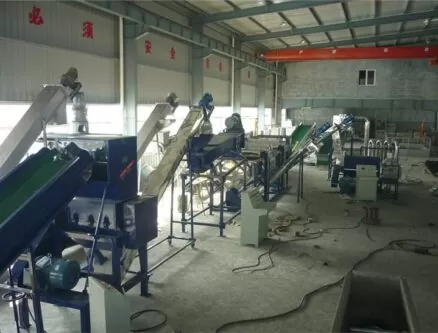Struggling with the idea of starting a plastic recycling business? You’re not alone. Many dream of building a sustainable business, but they’re tangled in permits, machines, and plastic types. I get it. I’ve been there. Starting Amige wasn’t easy either. But trust me—it’s doable, scalable, and incredibly impactful. And no, you don’t need to be Elon Musk with a PhD in polymers.
The short answer? Start small, learn fast, and get the right equipment. Know your plastic types, nail down local sourcing, and invest in a good shredder or pulverizer. Build connections with recyclers, manufacturers, and even artists. A plastic recycling business is part science, part hustle, and 100% grit.
Let’s dive deeper—because your recycling empire won’t build itself, right?

Why Start a Plastic Recycling Business?
Because plastic waste isn’t going anywhere.
Globally, we produce over 400 million tons of plastic annually. Less than 10% gets recycled. That’s a huge problem. And a massive opportunity.
Plastic recycling isn’t just a green business. It’s a growth business. Governments are pushing sustainability. Consumers are demanding eco-friendly products. If you can convert waste into usable materials, you’re not just helping the planet—you’re creating value.
Plus, let’s be honest. There’s something deeply satisfying about turning trash into treasure.
What Kind of Plastic Should I Recycle?
Ah, the million-dollar question.
Not all plastics are created equal. Start with easier-to-process materials like:
- PET (Type 1) – water bottles, food containers
- HDPE (Type 2) – detergent bottles, milk jugs
- PP (Type 5) – yogurt cups, caps, and straws
Avoid PVC and mixed plastics early on. They’re trickier to process and often not cost-effective unless you’re running a high-end facility.
My recommendation? Begin with HDPE. It’s everywhere and easy to shred. Even a modest crusher can handle it like a champ.
What Equipment Do I Need?
Now we’re talking my language.
At Amige, we manufacture plastic shredders, crushers, and pulverizers. These are your frontline soldiers.
Here’s a basic setup to get you started:
- Plastic crusher or shredder – for size reduction
- Washing tank – to clean the plastic
- Drying system – for removing moisture
- Granulator or extruder – to pelletize plastic for resale
Need to go full pro? Add label removers, metal detectors, and color sorters.
Don’t worry—you don’t need to buy everything at once. Start lean. Grow with your profits.

Where Do I Source Plastic Waste?
It’s not as hard as you think.
Start local. Think:
- Residential neighborhoods
- Schools and universities
- Factories and packaging plants
- Supermarkets
- Municipal waste streams
Talk to your local waste management offices. Partner with community groups. Even run plastic collection drives. You’d be surprised how eager people are to recycle when someone actually picks up the phone.
Over 60% of plastic recyclers get their materials within a 30 km radius.
Make yourself the go-to recycler in your area.
How Much Does It Cost to Start?
Let’s keep it real. You’ll need capital.
For a small setup, expect an initial investment of $15,000–$50,000. Here’s a rough breakdown:
- Shredder: $5,000–$15,000
- Washing unit: $3,000–$10,000
- Dryer: $2,000–$7,000
- Workspace & utilities: varies
- Licenses and permits: a few hundred to a few thousand, depending on your region
Need help? Check local environmental agencies—some offer green startup grants.
Also, don’t forget to budget for maintenance and labor.
Do I Need a License or Permit?
Yes—and no, it’s not optional.
Depending on your location, you may need:
- Environmental compliance permit
- Business operation license
- Waste handling certification
- Fire and safety clearances
Start by visiting your city’s environmental protection department. They’ll guide you—or confuse you. Either way, it’s worth sorting out early.
Pro tip: Register your business as a limited liability company (LLC) or similar legal entity to protect yourself.
How Do I Sell Recycled Plastic?
This is where the money comes in.
You can sell recycled plastic as:
- Shredded flakes
- Pellets (granules)
- Molded items (if you go vertical)
Find buyers through:
- Plastic product manufacturers
- Packaging companies
- Injection molding factories
- B2B platforms like Alibaba or Made-in-China
- Your own website
Don’t forget to attend trade shows or join recycling networks. Your shredded HDPE could be the raw material for someone’s next eco-product line.

What Mistakes Should I Avoid?
Glad you asked.
Here are rookie mistakes I’ve seen (and made):
- Ignoring contamination – Dirty plastic clogs your machines and ruins your output
- Buying cheap equipment – Trust me, it’ll break down when you need it most
- Overpromising contracts – Start small. Deliver well. Then scale.
- Forgetting maintenance – Clean your shredder teeth! They bite back if neglected
- Skipping research – Know your local laws, waste supply, and buyers before going all in
If you’re unsure, talk to people like me. I’ve helped dozens of recyclers build from scratch.
Can I Make Money with This?
Absolutely. If done right.
Let me give you a rough example:
- Collect 2 tons of HDPE per week
- Clean, shred, and sell flakes at $500/ton
- That’s $4,000/month gross revenue
- Subtract costs—still looking at $1,000–$2,000/month profit in the early stages
Once you scale, profits multiply.
Some of our clients now process 20+ tons/week. And yes, they’re making six figures annually.
What’s the Future of Plastic Recycling?
Bright—and necessary.
With global plastic demand expected to rise 22% by 2030, recycling tech is heating up.
Think:
- AI-based sorting
- Chemical recycling
- Blockchain waste tracking
But it all starts with local efforts. Like yours.
By grinding plastic in your garage today, you’re joining a global movement tomorrow. That’s powerful.

Conclusion
Starting a plastic recycling business isn’t just smart—it’s essential. With the right machines, mindset, and hustle, you can build something that matters. Let’s clean up the world. One flake at a time.
